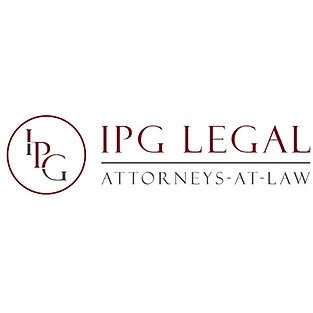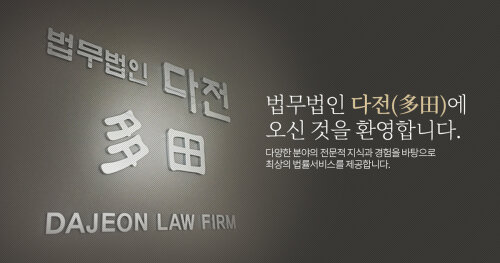Best Restructuring & Insolvency Lawyers in South Korea
Share your needs with us, get contacted by law firms.
Free. Takes 2 min.
Or refine your search by selecting a city:
List of the best lawyers in South Korea
About Restructuring & Insolvency Law in South Korea
Restructuring and insolvency law in South Korea governs the process by which individuals and companies facing financial difficulty can reorganize their debts, protect themselves from creditors, or liquidate assets in an orderly fashion. The goal is to provide mechanisms that help distressed debtors achieve financial rehabilitation while balancing the rights of creditors. South Korea has a well-established legal framework for insolvency and corporate restructuring, anchored by its Debtor Rehabilitation and Bankruptcy Act, which offers procedures for both rehabilitation (similar to reorganization) and bankruptcy (liquidation).
Why You May Need a Lawyer
A legal professional specializing in restructuring and insolvency can offer critical support in various situations. You may need a lawyer if you or your company are experiencing financial distress and need advice on your options. Lawyers can assist in preparing and submitting rehabilitation or bankruptcy petitions, negotiating with creditors, and advising on compliance with local laws. Additionally, stakeholders such as creditors, suppliers, employees, or other interested parties may require legal counsel to protect their interests within bankruptcy proceedings or rehabilitation processes.
Common scenarios where legal help is crucial include:
- Assessing eligibility for corporate or personal rehabilitation
- Navigating complex legal filings and court procedures
- Defending against creditor lawsuits or asset seizures
- Challenging or disputing claims in insolvency proceedings
- Ensuring fair treatment under liquidation or restructuring plans
Local Laws Overview
South Korea’s insolvency and restructuring laws are primarily contained in the Debtor Rehabilitation and Bankruptcy Act (DRBA). The DRBA establishes clear protocols for two main tracks:
- Rehabilitation Proceedings - Designed for companies or individuals with going concern value, these proceedings are similar to Chapter 11 bankruptcy in the United States. The goal is to allow debtors to continue operations while repaying debts under a court-approved plan.
- Bankruptcy Proceedings - This is a liquidation process in which assets are distributed to creditors according to statutory priority.
Key aspects of South Korean restructuring and insolvency law include:
- Automatic stay on creditor actions once rehabilitation or bankruptcy is filed
- Court-supervised management of the debtor's assets and liabilities
- Strict timelines and documentation requirements for filings
- Distinction between ordinary unsecured creditors and secured or preferential creditors
- Possibility for cross-border insolvency procedures, subject to certain conditions
- Criminal sanctions for fraudulent transfers or misrepresentation during proceedings
Frequently Asked Questions
What is the difference between rehabilitation and bankruptcy in South Korea?
Rehabilitation is designed to allow financially distressed debtors to restructure their obligations and continue business operations under a court-approved plan. Bankruptcy, in contrast, generally results in the liquidation of the debtor’s assets and distribution of proceeds to creditors.
Who can file for insolvency or restructuring in South Korea?
Both individuals and companies can file for bankruptcy or rehabilitation if they are unable to pay their debts as they become due. Creditors may also be able to initiate proceedings in certain circumstances.
What is an automatic stay?
An automatic stay is a legal provision that immediately halts all collection activities and lawsuits against the debtor once insolvency or rehabilitation proceedings are filed. This allows the court to manage the process in an orderly manner without outside disruptions.
How long do insolvency proceedings usually take?
The duration can vary significantly. Rehabilitation cases may take several months for the court to approve a restructuring plan, while bankruptcy can take several months to more than a year, depending on complexity and the number of creditors involved.
Can foreign creditors participate in South Korean insolvency proceedings?
Yes, foreign creditors can participate. South Korea recognizes certain cross-border insolvency principles, although there may be additional procedural requirements for non-Korean entities.
What rights do creditors have in insolvency cases?
Creditors can file claims, participate in creditor meetings, and vote on rehabilitation plans. Secured creditors have priority over asset proceeds, and preferential creditors such as employees may have special rights.
Are directors or management liable for company insolvency?
Generally, directors or management are not liable unless there has been fraud, willful misconduct, or gross negligence. However, the court can examine directors’ conduct and hold them accountable for improper actions leading up to insolvency.
Does personal bankruptcy erase all my debts?
Not all debts are dischargeable under South Korean law. Certain obligations, such as fines or damages from illegal acts, may remain even after bankruptcy. It is important to consult a lawyer regarding the specific circumstances of your case.
Is it possible to reverse an insolvency or restructuring if my financial situation improves?
In rehabilitation, if the debtor can pay off debts or secure sufficient support, the court may terminate the proceedings. In bankruptcy, the process is generally irreversible once liquidation has begun.
How do I find legal or professional help for my case?
You can contact specialized law firms, consult with insolvency practitioners, or seek help through government agencies. See the resources below for more information.
Additional Resources
If you need more detailed information or support in South Korea, consider contacting the following organizations:
- Korean Bar Association - Offers lawyer referrals and legal information
- Seoul Bankruptcy Court - Handles most insolvency and restructuring cases in the capital region
- Korea Legal Aid Corporation - Provides free or subsidized legal services to qualifying individuals
- Ministry of Justice - Offers guidance on South Korean laws, including insolvency
- Local legal clinics and support centers - May provide counseling or point you toward specialized professionals
Next Steps
If you believe you may need assistance with restructuring or insolvency in South Korea, start by gathering all relevant financial documents such as contracts, loan statements, receipts, and correspondence from creditors. Consult with a qualified lawyer or insolvency specialist to evaluate your situation in detail and explore all options available to you. Early legal intervention can maximize your chances of a favorable outcome and minimize additional legal or financial complications.
Remember, insolvency and restructuring procedures are complex and time sensitive. Reaching out to professional advisors as soon as possible is the best way to protect your rights and interests.
Lawzana helps you find the best lawyers and law firms in South Korea through a curated and pre-screened list of qualified legal professionals. Our platform offers rankings and detailed profiles of attorneys and law firms, allowing you to compare based on practice areas, including Restructuring & Insolvency, experience, and client feedback.
Each profile includes a description of the firm's areas of practice, client reviews, team members and partners, year of establishment, spoken languages, office locations, contact information, social media presence, and any published articles or resources. Most firms on our platform speak English and are experienced in both local and international legal matters.
Get a quote from top-rated law firms in South Korea — quickly, securely, and without unnecessary hassle.
Disclaimer:
The information provided on this page is for general informational purposes only and does not constitute legal advice. While we strive to ensure the accuracy and relevance of the content, legal information may change over time, and interpretations of the law can vary. You should always consult with a qualified legal professional for advice specific to your situation.
We disclaim all liability for actions taken or not taken based on the content of this page. If you believe any information is incorrect or outdated, please contact us, and we will review and update it where appropriate.
Browse restructuring & insolvency law firms by city in South Korea
Refine your search by selecting a city.















